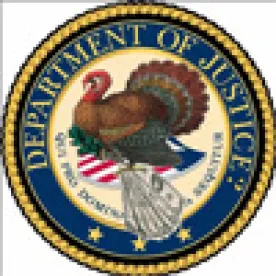This month, the US Department of Justice Antitrust Division revised its “Frequently Asked Questions About the Antitrust Division’s Leniency Program and Model Leniency Letters” (FAQs), with releases both before and after the new administration took office. The revisions serve as a signal that the continuity we have seen in previous years from the Antitrust Division is likely to continue. The changes include long-needed clarifications and updates since the release of the FAQs in 2008.
Background
The US Department of Justice (DOJ) Antitrust Division revised its “Frequently Asked Questions About the Antitrust Division’s Leniency Program and Model Leniency Letters” (FAQs). This guidance was originally released in November 2008. The FAQs contain 34 questions and answers that include: applying for leniency; the criteria for receiving leniency under the Corporate Leniency Policy and the Leniency Policy for Individuals; conditional and final unconditional leniency letters; potential revocation of conditional leniency; and confidentiality for applicants.
Updates to FAQs
The revisions were released on January 17, and again on January 26 to correct an omitted footnote in the first release. Since the revisions come in the midst of the presidential transition, including after the new administration took office, one may assume that the FAQs had the approval from new leadership. As a first signal, the message is largely one of continuity. Though some report that the changes indicate the Division will take a narrower approach in granting immunity, this is not necessarily the case. The Division points out in its short announcement that “[m]any questions—and answers—remain unchanged from before,” and that some have been “clarified” in response to 10 years of Division practice since the FAQs were first released.
Specifically,
-
The revisions change the wording regarding Type B leniency (available where the Division already has some evidence of a violation, but only if “[t]he corporation is the first to come forward and qualify for leniency with respect to the activity”). With respect to cooperating employees, officers and directors of a Type B leniency applicant, the wording includes a change from “the Division ordinarily provides leniency” as it would in a Type A context, to “the Division often chooses to include protection” for these persons. With this subtle change, the Division includes a caveat that it “may exercise its discretion to exclude from the protections that the leniency letter offers those current directors, officers, and employees who are determined to be highly culpable.” This language raises questions in part because of the lack of definition of “highly culpable” and lack of guidance as to how the Division will exercise its discretion. However, bear in mind that it would be counterproductive for the Division to exclude from coverage an individual whose cooperation has great value for its investigation. Given the fast pace of many investigations, the Division would need to move quickly to implement any exclusion, creating a risk of potentially losing access to valuable evidence if it excludes key individuals from coverage. Company and individual counsel will need to press for clarity on individual coverage at the inception of Type B investigations.
-
Cooperation remains key and receives added emphasis in the revised FAQs, but cooperation has always been key to the application for leniency with the Division.
-
The guidance on non-antitrust crimes confirms that the Division will grant leniency for such crimes that are integral to the antitrust crime. However, as was the case before, the Leniency Program “does not protect applicants from criminal prosecution by other prosecuting agencies for offenses other than Sherman Act violations.” The document makes clear that applicants should not expect to use leniency to obtain immunity from other agencies for non-antitrust crimes. This clarifies more than changes existing policy. The Division prosecutes antitrust, obstruction, mail and wire fraud crimes, but typically leaves other crimes such as securities fraud and violations of the Foreign Corrupt Practices Act (FCPA) to other parts of the DOJ. The new FAQ states that other prosecuting agencies do not typically attempt an end-run around the Leniency Program for antitrust crimes.
-
The revisions include a new question describing the Division’s approach to the “Penalty Plus” framework under which the Division seeks enhanced penalties for companies that omit reporting certain antitrust crimes when pleading guilty to others. The Division’s Penalty Plus policy has been in place for many years and is meant to punish recidivism with respect to companies that take advantage of the Leniency Program with one product but do not investigate or disclose conduct with respect to other products. With the changes, the Penalty Plus guidance is clearer. However, these incentives for thorough internal investigations by companies have always been present.
-
The edits also streamline the language dealing with the marker system whereby a company may investigate its own conduct. Applicants for leniency must contact the deputy assistant attorney general for criminal enforcement or the director of criminal enforcement, instead of staff in one of the Division’s criminal investigative offices.
Recommendations
The Division’s FAQs is an important document that provides insights into the Division’s practice. The revisions to the FAQs are important changes, and they serve to update and clarify guidance that was close to a decade old. The continuity we have seen from the Division over the years, despite the previous administration changes, is likely to continue under the current administration with respect to criminal activity. Though it is early in the days of the current administration and not all new leadership is in place, the revisions to the FAQs could be the first indication that criminal antitrust enforcement may be as usual at the DOJ.



 />i
/>i
